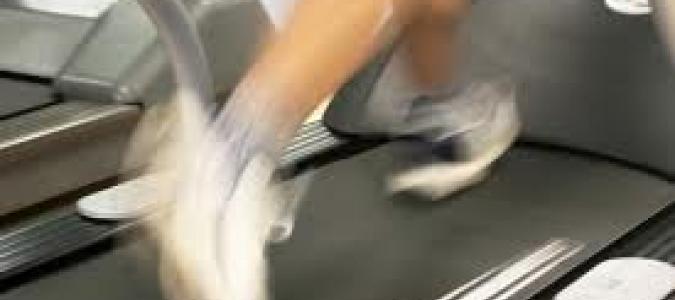
Mixing Up Your Cardio Routine For Golf
Mixing up your cardio routine for golf can be beneficial. If you are a regular here at a gym there is a good chance that you have been doing the same cardio routine for a while. Why not mix up your cardio routine? What if I told you that you could get more out of your workout by putting in less time on the treadmill or elliptical. Recent research has shed light on the dark days of long steady state cardiovascular training. As you have probably read in fitness magazines by now, the recent trend towards HIIT (High Intensity Interval Training) conditioning is beginning to replace the old school thought of spending long hours on the treadmill. Essentially HIIT means doing shorts bursts of higher intensity exercise followed by larger break periods. A usually work to rest ratio is about 3:1. An example of this would be sprinting on a treadmill for 15 seconds and then jumping off and resting for about 45 seconds before repeating again. This would typically last for about 8 rounds equaling 8 minutes of work. Of course for most of you sprinting is not an option but this type of training can be done on a stationary bike, the arc trainer or even walking on an incline. The key is to make sure the intensity for the 15 seconds is high. This means that the workout is going to be hard, harder than what you are used to, but it takes less than half the time.
Research has been done comparing long steady state cardiovascular training with HIIT and the results are surpising.
- In a case study done in Canada at McMaster University researchers compared the effects of 20 minutes of high intensity interval training (30 second sprints followed by 4 minute resting periods) with 90-120 minutes long steady state training in the heart rate zone. Subjects got the same results in oxygen utilization in both programs but the amazing thing is the interval training group actually only did 2 minutes and 30 seconds of actual work.
- In a more famous study known as the Tabata study, researchers found that by using an interval of 20 seconds of high intensity work and a rest period of 10 seconds for a total of 4 minutes participants were able to achieve higher V02max(aerobic capacity) and a faster heart rate recovery when compared to the group who did moderate intensity endurance training.
In summary HIIT has been shown to improve the following better than long steady state training:
- V02max
- Anaerobic Threshold
- Heart Rate Recovery
- Stroke Volume
- Exercise Post Oxygen Consumption (increases caloric burn at rest)
- Fat Loss
If you are a beginner to this type of training you may want to start with LIIT (Low Intensity Interval Training) or you may throw up…same idea just keep the intensity a little lower.
HIIT Recommendations:
- Make sure you drink plenty of water and eat about 1.5 hours before you do it.
- Perform the interval training after you do your strength training or you may be to tired to lift.
- Only do this type of training 2x’s a week as it can be strenuous.
Training Options:
- 2 min. warm-up
- 30 seconds on – hard
- 30 seconds off – very light
- 30 seconds on – hard
- 45 seconds off – very light
- 30 seconds on – hard
- 1 min. off – very light
- 30 seconds on – hard
- 1:15 seconds off – very light
- 30 seconds on – hard
- 1:30 off – very light
- 30 seconds on – hard
- 1:45 seconds off – very light
- 30 seconds on – hard
- 2:00 minutes – off
As you can see the rest intervals increase by 15 seconds as you progress through the rounds. Total of 3.5 minutes of hard work and 9 minutes of very light work equal 12.5 minutes of work. In the above example, the rest periods are determined based on the work time and the total time. For a more individualized program use a heart rate monitor. Figure out your heart rate max by subtracting your age by 220. Then calculate what your heart rate would be at 60% of your max heart rate. Do a 2 minute warm-up and then the 30 second high intensity interval. This time, instead of resting the allotted 30 seconds, wait until your heart rate lowers to the 60% number. When it returns to 60% go hard for another 30 seconds. After 30 seconds wait again until that number returns to 60%. Repeat this process for the duration of the program. As you do it you’ll notice it will take longer and longer to return to the 60% number. As you follow the program for a few weeks your recovery time will decrease meaning your heart is becoming more efficient at recovering from intensity of the intervals.
As always make sure to consult your doctor before undertaking any new exercise program.
Good Luck and Have Fun!!!